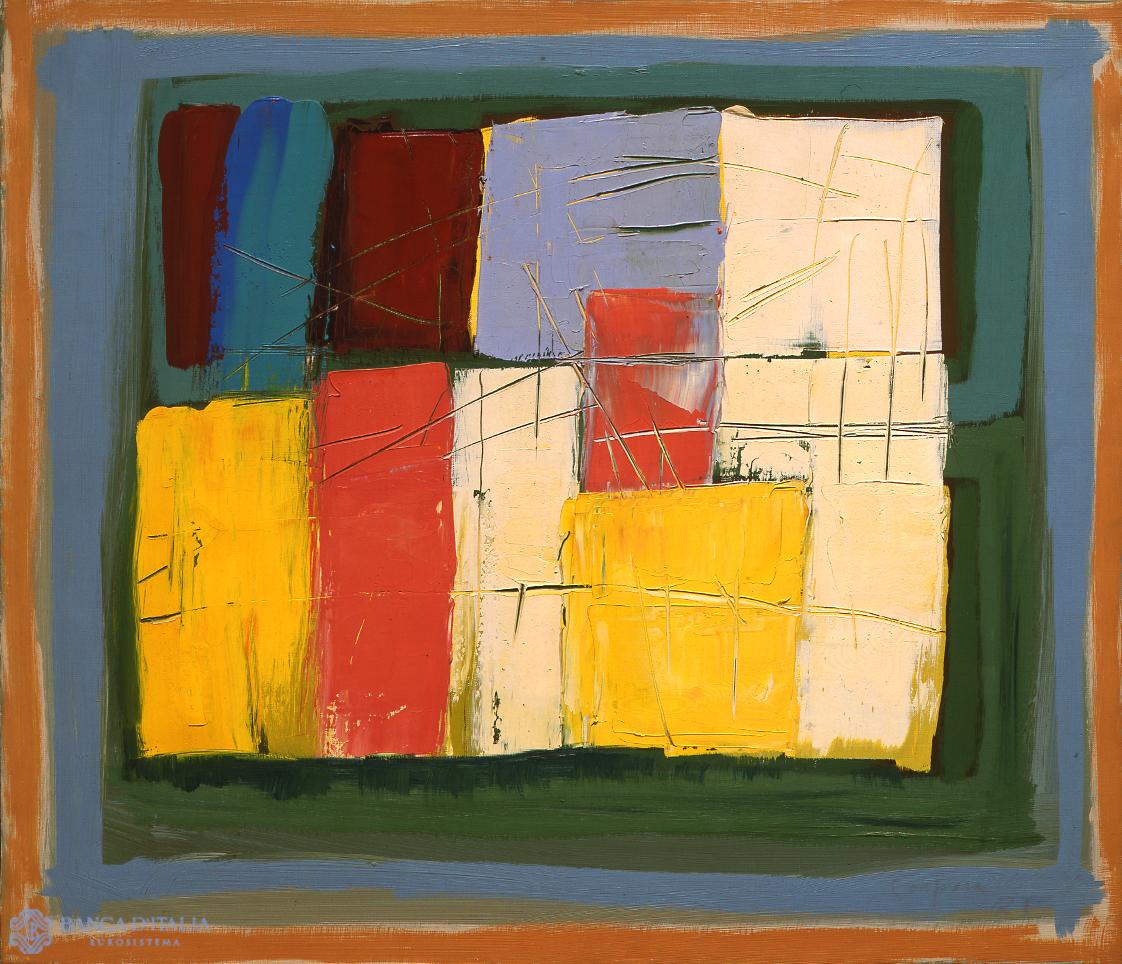The image, enclosed by monochrome bands of browns, blues and greens that besiege it and progressively confine it to the centre, is composed of a jumble of imperfectly geometrical tesserae, which are intensely, almost joyously coloured and which, right in the middle of the work, comprise a kind of architecture of surface, vibrating with emotion, yet fixed and haughty.
Beginning in the late 1960s, Corpora works through his departure from an Informalist cultural environment, and returns to meditate on the concretist roots of his painting, which had attained an early maturity in the mid-1930s within the Parisian group Cercle et Carré. This group’s quest tended towards forms that were clearly independent of the pretext of nature, autonomously created, inspired for the most part by a rigorous geometrism. In this way the material thins out and the sign is reabsorbed by a layer of freshly weightless colour, enchanted and joyous: the result calls to mind the bright colours of the fauves and of Matisse in particular, who once again became Corpora’s first point of reference. Meanwhile the titles of these works often evoke the emergence of that dimension of memory which from here on in will be among the guiding principles of his work.
Antonio Corpora, Il paese della nostra infanzia
Il paese della nostra infanzia
Painting
20th century AD
Abstract

Artist
Date
1971
Material and technique
Oil on canvas
Measurements
60 x 70 cm
Compiler
Fabrizio D'Amico
